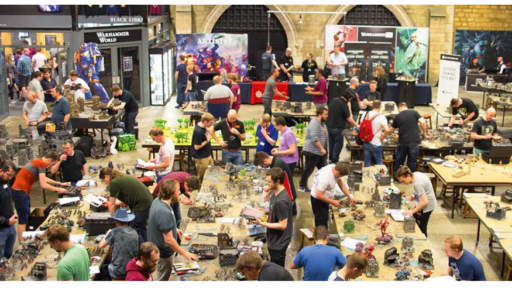
Read this speech by a hedge fund superstar and AI supercycle enthusiast.
AI Is Still in Early Stages. Laffont said we are still at the beginning of an AI supercycle, which is just three years old. There’s a major technology trend every 10 years or so, he noted, from PCs to mobile internet to cloud and now AI. “Fundamentally, as a tech investor, you look for these big waves,” Laffont said. “We’re pretty excited about AI.”
He predicts AI will enable massive winners this decade, similar to how Dell’s stock went up more than 1000 times in the 1990s. Laffont says AI should also drive wealth creation, with the technology sector likely growing to 75% of U.S. market cap from under 50% today.
Constant Disruption. Coatue looked at the history of what happens to the top 25 technology companies by value and found a quarter to one-third turnover every five years. The market “is absolutely relentless in getting rid of the deadweight and letting the best companies rise to the top,” Laffont said.
Tech Wins but Beware of Volatility. It pays to be long innovation. Laffont noted that the Nasdaq 100 has easily outperformed the Dow Jones Industrial Average over the last four decades with a 15% annual return versus 12%, respectively. But tech investors have to hold through larger drawdowns. Nvidia shareholders have had to experience 50% declines seven times since its IPO, he points out, and the Nasdaq fell 78% during the dot-com selloff.
Watch Big Tech Capex. It is important to focus on how the large technology companies keep raising their AI infrastructure budgets to build out data centers and buy chips to train and serve AI models.
Laffont’s data show that Wall Street’s 2025 consensus forecast for Big Tech capex has risen from $152 billion in 2021 to $213 billion in January 2024 to $310 billion in January 2025, to $365 billion today. It’s a bullish signal for AI’s traction and portends the real benefits of the technology.
Coatue’s research also shows a dramatic surge in usage of AI chatbots from both enterprises and from consumers over the last few months.
New Hyperscalers. Laffont believes AI will open up opportunities for new cloud computing players that specialize in AI. He believes the allocation of GPUs from Nvidia is a big deal and will be an indicator for future cloud revenue.
For 2025, Nvidia will sell 11% of its GPUs for the cloud computing market to CoreWeave and another 19% of its GPUs for the market to Oracle, according to Coatue’s analysis.
Don’t Bet Against America. Laffont says the U.S. has two unassailable advantages: Wall Street and Silicon Valley. American technology companies account for 75% of the sector’s global market cap, while 60% of the world’s AI researchers live in the U.S. There is no other country that has a comparable concentration of engineering talent and world-class universities.
He expects AI to drive a virtuous productivity cycle, leading to lower labor costs, less inflation, higher GDP growth, and lower budget deficits. The U.S. has brighter days ahead, according to Laffont.
Dow Jones Newswires, 2 July 2025 (Keynote speech by hedge fund manager, Philippe Lafont)

I have pushed the chart over to the right to highlight the steepness of the uptrend. This is the technology revolution in chart form. The revolution is accelerating, and this chart may only be getting into its stride.
QQQ (unleveraged) or QQQ3 (3x leveraged and daily rebalanced) are excellent buys in this context.
The Nvidia chart, not shown, looks incredibly exciting. I have also found this interesting take on the fundamentals.
Nvidia’s stock price and valuation have just reached their respective all-time-highs, leaving many investors wondering whether NVDA is overvalued. Maybe they should take profit? Surely, we will see some short-sellers active there.
For me, the ride has just begun. Since my latest article (you can review all my coverages of Nvidia here), Nvidia announced some key partnerships and during the recent GTC Paris conference, its CEO made it perfectly clear to me that the growth story behind AI just keeps accelerating. Let me walk you through that as we review whether Nvidia remains a buying opportunity.
The demand for artificial-intelligence-based solutions, computing, large language model (“LLM”) training, etc… each of these aspects drives the demand for Nvidia’s products, as they can be compared to shovels during a gold rush. The phrase “during a gold rush, sell shovels” perfectly captures Nvidia’s role, as its products constitute a cornerstone of the ongoing transformation. With currently Blackwell’s GB200 NVL72 leading the market, Nvidia left the competition far behind and is likely going to make the gap even wider with its next technologies and architectures:
GB200 NVL72 — “one giant GPU” and Nvidia’s most powerful AI platform yet — now in full production and powering everything from sovereign models to quantum computing.
“This machine was designed to be a thinking machine, a thinking machine, in the sense that it reasons, it plans, it spends a lot of time talking to itself,” Huang said (…)
There’s more coming, with Huang saying Nvidia’s partners are now producing 1,000 GB200 systems a week, “and this is just the beginning.”
It feels like everything advanced so quickly, doesn’t it? I mean, all the data suggests so, even Nvidia’s own results confirm that. Just over the last couple of years the number of people using inference stood at ~8m. How much do you think it grew since then? Twice as much? Three times as much? Not even close – we are looking at triple-digit number here as Huang mentioned 800m of users:
This new era of AI is being driven by a surge in inference workloads. “The number of people using inference has gone from 8 million to 800 million — 100x in just a couple of years,” Huang said.
Just barely over 2 years ago generative AI solutions were brought to the broad public awareness with flagship ChatGPT, now it seems that agentic AI is gaining such a momentum. While most of us learns how to create and interact with such agents, Nvidia and other major technological players are even further into the future – robotics.
Nvidia is already making tremendous profits on its existing business initiatives supporting hyperscalers mainly in terms of cloud infrastructure and data centers powering gen-AI and agentic AI – with robotics, Nvidia’s role will reach even further. Take the work dedicated to a humanoid AEON, developed based on Nvidia’s AI software and three-computer solution, as an example:
As a global labor shortage leaves 50 million positions unfilled across industries like manufacturing and logistics, Hexagon — a global leader in measurement technologies — is developing humanoid robots that can lend a helping hand. (…)
“The age of general-purpose robotics has arrived, due to technological advances in simulation and physical AI,” said Deepu Talla, vice president of robotics and edge AI at Nvidia. “Hexagon’s new AEON humanoid embodies the integration of Nvidia’s three-computer robotics platform and is making a significant leap forward in addressing industry-critical challenges.”
It’s worth acknowledging that efforts dedicated to the AI development are not limited to the U.S. or Asia, but Europe also takes action not to be left behind. While Europe is not mentioned often in such discussions (there’s even a joke that while the U.S. has AI, Europe has “AI Act” regulating it), Nvidia highlighted its participation in the industrial/physical AI:
From the heart of Germany’s automotive sector to manufacturing hubs across France and Italy, Europe is embracing industrial AI and advanced AI-powered robotics to address labor shortages, boost productivity and fuel sustainable economic growth.
Robotics companies are developing humanoid robots and collaborative systems that integrate AI into real-world manufacturing applications. Supported by a $200 billion investment initiative and coordinated efforts from the European Commission, Europe is positioning itself at the forefront of the next wave of industrial automation, powered by AI.
What’s the conclusion for Nvidia? All of these robots, LLMs, etc. will need “food.” That “food” will be named tokens and they will be generated in the most innovative data centers – currently powered by Blackwell, but their future also lies in the upcoming architecture – Rubin.
It’s easy to fall into worries about potential overvaluation once the stock price hits another ATH [all time high]. Look at the development of NVDA’s price-to-earnings ratio (I normally look at EV/EBITDA, but it presents the same tendency). It obviously increased since April 2025 as the valuation experienced a dynamic recovery (over 50%).
What’s the key in determining whether it’s worth paying nearly $50 for $1 of earnings per share? The growth story behind Nvidia and its ongoing path of development. Nvidia’s last couple of years showed it has a very pretty habit of growing into its valuation. Look how its P/E ratio looked back in July 2023 – over 240x! And now, let me surprise you, Nvidia’s buyers from that period actually made quite a lot of money.
How could that happen? Nvidia’s bottom line grew at a more dynamic pace than its valuation. That’s why you observed a declining valuation multiple even since early 2024. Yes, it grew now to nearly 50x, but… if Nvidia remains on this path, delivers on its expected product roadmap, and the world continues stepping towards an AI-powered economy, Nvidia’s current valuation will seem cheap a few years from now.
Seeking Alpha, 26 June, CFV (Cash Flow Venue)
I am super excited about Nvidia on growth grounds, chart grounds, story grounds and oodles of magic. I also think there is a massive ‘something new’ germinating at Nvidia in the form of cloud services. I have been listening to a short video that attempts to explain what is happening.
Nvidia dominates the data centre/ AI factory infrastructure market with its ever-evolving GPU chips. This makes it a formidable competitor. But the hyperscalers, Microsoft, Amazon, Alphabet and the rest do not want to be held to ransom by Nvidia, so they are investing billions in developing their AI-specific chips.
The problem for them is that if they go after Nvidia, then Nvidia will go after them, and that is exactly what is happening. Aided by satellite companies like Coreweave, Nvidia is keeping its chips scarce for the hyperscalers and feeding chips into its connected network of smaller, more closely affiliated companies.
I believe it is also developing its own cloud services business, which may end up cutting out the hyperscalers and allowing Nvidia to engage directly with the final customers. Jensen Huang says customers use its GPUs to develop tokens worth five times the cost of developing them. It would not be too surprising if Nvidia wants to capture some of those huge margins for its shareholders.
Who knows how this will all pan out? Certainly not an 80-year-old ruminating somewhere in Kensington, London, England. I don’t need to be a tech geek to know one thing. Nvidia is a formidable competitor. They know how to win. Plus, this is excellent news for Coreweave, playing such a key role in this process.
It occurred to me on rereading this piece that it is also good news for Oracle, which is buying even more of the latest GPUs than Coreweave. What a statement of intent that is.
Share Recommendations
QQQ
QQQ3
Nvidia. NVDA
Coreweave. CRWV
Oracle ORCL
All of these shares but QQQ are in my ‘Amazing Eighteen’ portfolio, and a leveraged investor in QQQ is similar to buying QQQ3 and can be done in a tax-free spread betting account.



